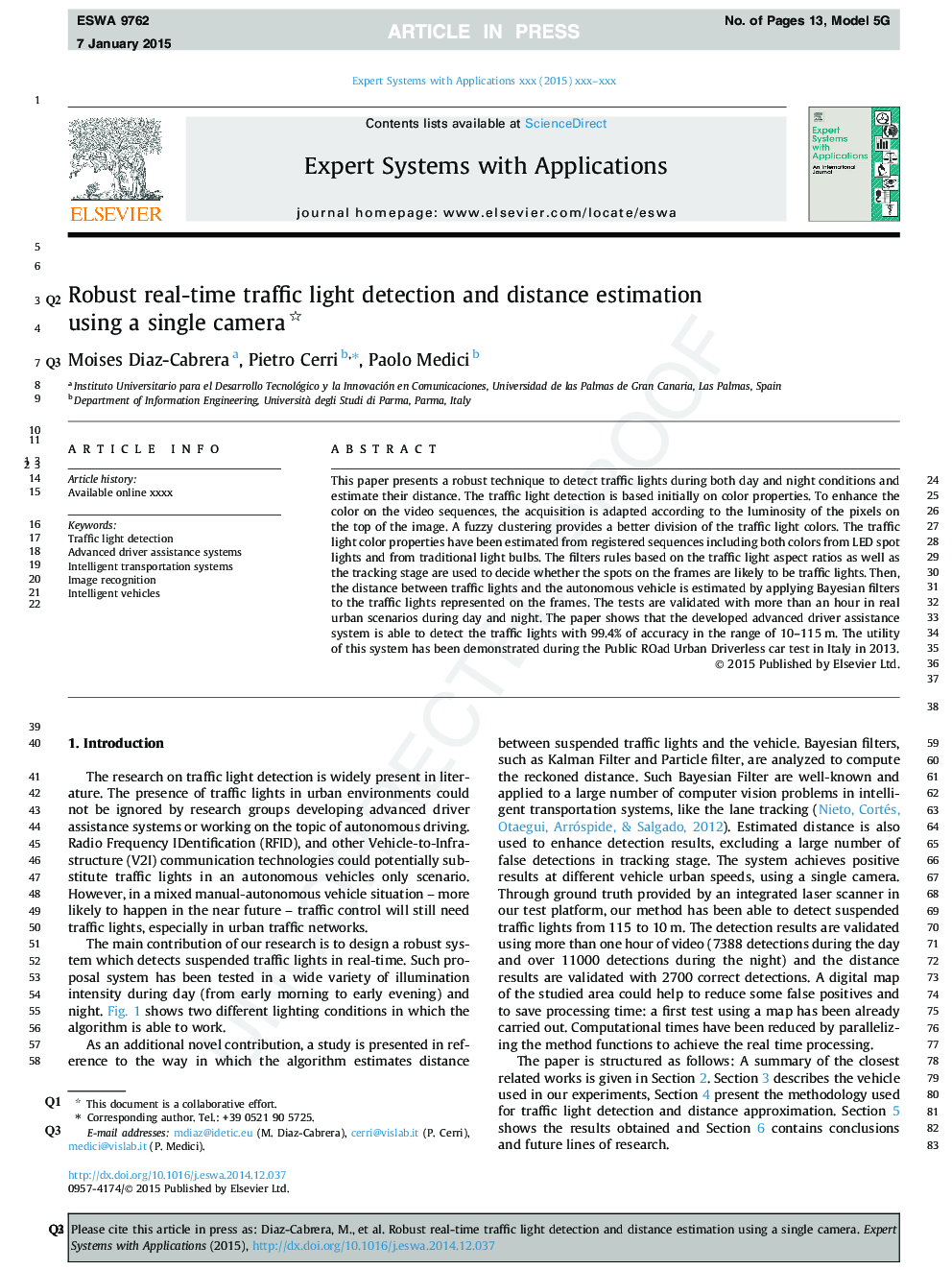| Article ID | Journal | Published Year | Pages | File Type |
|---|---|---|---|---|
| 10322798 | Expert Systems with Applications | 2015 | 13 Pages |
Abstract
This paper presents a robust technique to detect traffic lights during both day and night conditions and estimate their distance. The traffic light detection is based initially on color properties. To enhance the color on the video sequences, the acquisition is adapted according to the luminosity of the pixels on the top of the image. A fuzzy clustering provides a better division of the traffic light colors. The traffic light color properties have been estimated from registered sequences including both colors from LED spot lights and from traditional light bulbs. The filters rules based on the traffic light aspect ratios as well as the tracking stage are used to decide whether the spots on the frames are likely to be traffic lights. Then, the distance between traffic lights and the autonomous vehicle is estimated by applying Bayesian filters to the traffic lights represented on the frames. The tests are validated with more than an hour in real urban scenarios during day and night. The paper shows that the developed advanced driver assistance system is able to detect the traffic lights with 99.4% of accuracy in the range of 10-115Â m. The utility of this system has been demonstrated during the Public ROad Urban Driverless car test in Italy in 2013.
Keywords
Related Topics
Physical Sciences and Engineering
Computer Science
Artificial Intelligence
Authors
Moises Diaz-Cabrera, Pietro Cerri, Paolo Medici,
